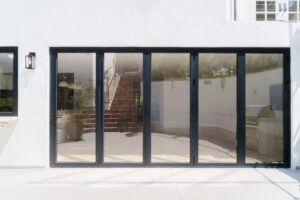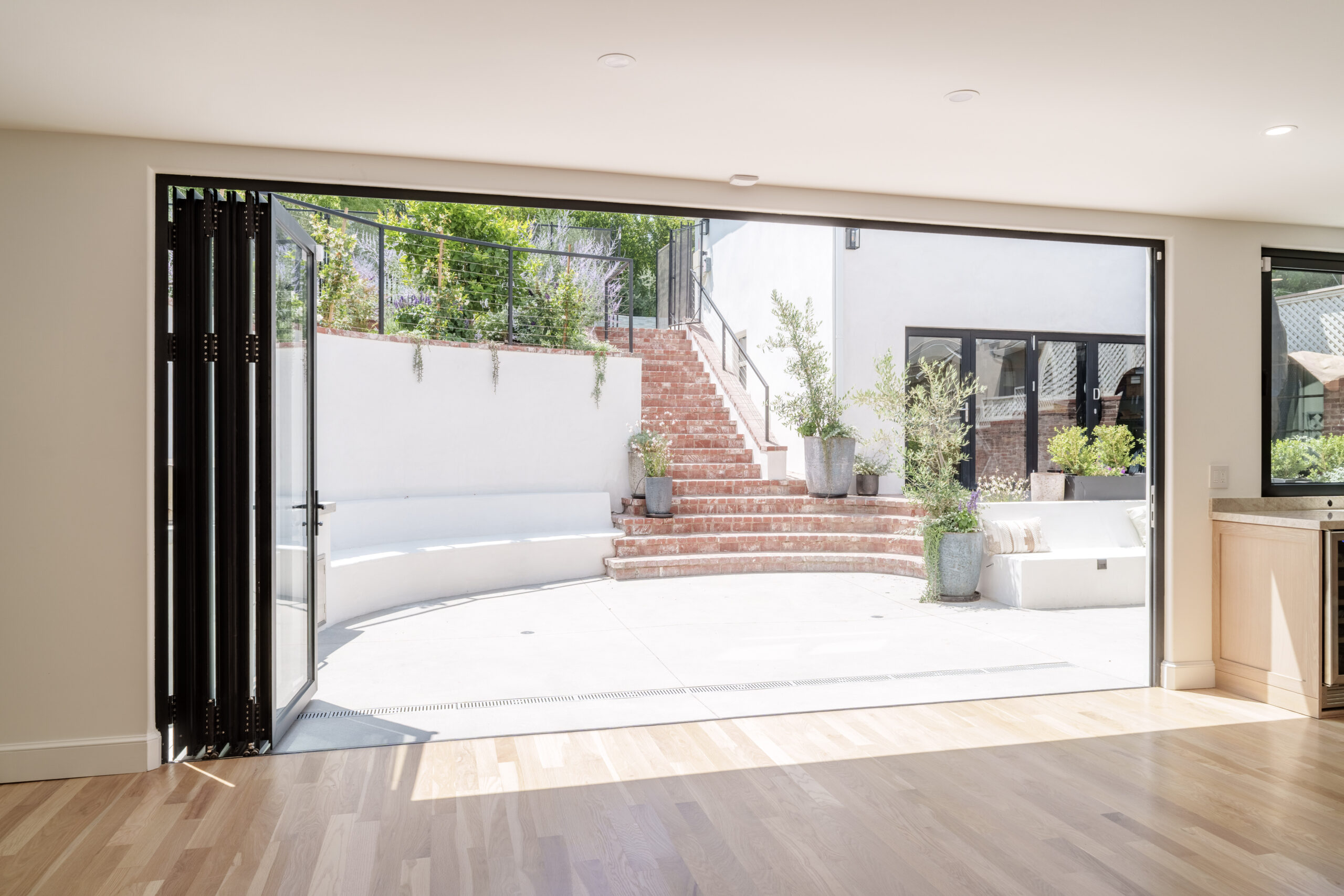Introduction: The Science Behind Comfort
Every home has a heartbeat, and it often beats strongest where the indoors meets the outdoors. Doors, especially those that open wide onto patios and gardens, play a powerful role in shaping that rhythm.
Aluminum bi-fold doors are admired for their beauty and functionality, but behind their sleek design lies a vital detail: their energy efficiency. And the secret measure that defines that efficiency is the U-value of aluminum bi-fold doors.
At Eris Home Products, we believe knowledge is power — and understanding U-values empowers homeowners to make smarter, more sustainable choices.
What Is the U-Value?
The U-value (also known as the U-factor) measures how well a door or window prevents heat from escaping. In simple terms, it’s a number that tells you how good a product is at insulating.
- Low U-value: Better insulation, less heat loss.
- High U-value: Poor insulation, more heat loss.
Think of U-value as the scorecard for a door’s thermal performance. Just as a coat keeps you warm in winter by trapping body heat, a low U-value ensures your doors keep warmth inside and the cold outside.
Why the U-Value Matters
When choosing energy efficiency bifold doors, the U-value is more than a technical figure — it’s a guarantee of comfort and savings.
- Energy Costs: Doors with low U-values reduce heating and cooling bills.
- Comfort: Maintain consistent indoor temperatures year-round.
- Sustainability: Lower energy consumption means a smaller environmental footprint.
As the old saying goes, “Money saved is money earned.” A better U-value means you’re not paying to heat or cool the outdoors.
Aluminum has often been misunderstood when it comes to insulation. On its own, aluminum is a conductor, which means it transfers heat quickly. However, modern technology has transformed this challenge into an advantage.
- Thermal Breaks: Modern aluminum bifold doors include insulated barriers inside the frame, stopping heat from passing through.
- Advanced Glazing: Double- and triple-glass options further reduce heat loss.
- Seals and Gaskets: Tight seals keep drafts out and warmth in.
The result is thermal performance doors that rival, and often exceed, traditional materials. With Eris Home Products, aluminum folding doors combine strength with cutting-edge energy efficiency
Comparing U-Value Standards
To understand the impact of U-value, it helps to look at general standards:
- Building Regulations: Many codes require U-values of 1.6 W/m²K or lower for external doors.
- High Performance: Premium aluminum bifold doors can achieve U-values as low as 1.2 W/m²K or even better with triple glazing.
- Older Models: Outdated doors without thermal breaks may have U-values above 2.0 W/m²K, making them inefficient and costly to maintain.
When comparing folding door materials, wood may naturally insulate better, but aluminum with modern engineering provides consistent performance with far less maintenance.
Compliance With Building Codes
Home improvements must meet local regulations, and U-value plays a central role. Choosing doors that comply with or exceed code requirements ensures not only comfort but also legal approval for renovations.
- Energy Standards: Compliance guarantees that your home is future-ready.
- Property Value: Homes with energy-efficient installations are more attractive to buyers.
- Peace of Mind: With Eris Home Products, every patio bifold door meets or surpasses required standards.
Think of compliance as building on solid ground: when your doors are certified, your investment rests on a foundation of reliability.
The Role of Glass in Energy Efficiency
Glass makes up most of the surface area in aluminum bi-fold doors, so its performance is crucial.
- Double Glazing: Two panes with an air or gas-filled gap to reduce heat loss.
- Triple Glazing: Three layers of protection for maximum efficiency.
- Low-E Coatings: Special layers that reflect heat back into the room without blocking natural light.
Glass options can reduce U-values dramatically, turning your bifold doors into shields that conserve energy while still flooding your home with sunlight.
The Investment Perspective
While energy-efficient aluminum doors may cost more upfront, the long-term returns are undeniable:
- Lower Bills: Energy savings accumulate year after year.
- Durability: Aluminum frames resist warping, swelling, and decay.
- Sustainability: Reduced energy use benefits both the planet and your wallet.
It’s the timeless wisdom: “Don’t count the cost; count the value.” A high-performance aluminum bifold door pays for itself through comfort, savings, and durability.
Conclusion: Efficiency That Opens New Possibilities
The U-value of aluminum bi-fold doors is more than a number; it’s a reflection of how well your home will live, breathe, and save. From thermal breaks to advanced glazing, modern aluminum doors prove that strength and efficiency can coexist.
At Eris Home Products, we provide more than outdoor aluminum folding doors — we provide energy solutions that bring style, comfort, and sustainability together.
Because when your doors insulate as beautifully as they illuminate, your home becomes not just a place to live, but a place to thrive.
Choose aluminum bifold doors with confidence. Let Eris Home Products help you open the door to energy-efficient living today.
FAQ
1. What is a U-Value, and why does it matter?
U-Value measures how much heat passes through a door. The lower the number, the better your aluminium bi-fold doors will insulate your home and reduce energy bills.
2. What’s a good U-Value for aluminium bi-fold doors?
U-Value of 1.4 W/m²K or lower is excellent. It means your doors meet or exceed UK energy standards and help maintain a comfortable indoor temperature year-round.
3. How can I make my aluminium bi-fold doors more energy efficient?
Choose doors with thermal breaks, double or triple glazing, and ensure proper sealing during installation to prevent draughts and heat loss.
4. Are aluminium bi-fold doors energy efficient compared to other materials?
Yes. Thanks to advanced insulation and thermal break technology, modern aluminium bi-fold doors can be just as energy efficient as uPVC or timber options.







